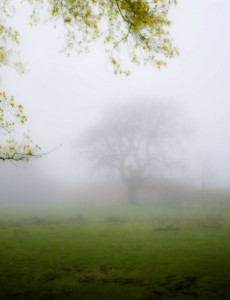A secret memoir of Dr. Henry Tuttle, discovered by his nephew and executor, Gary Cuba.
An audio version of this story is available on Drabblecast.
“Once you start to see them, they seem to be everywhere.”
After rendering this enigmatic statement, my friend Rolfson brought his snifter of brandy close to his lips, swirled it gently, and took a sip. The chessboard on the small table between our chairs was devoid of all but a few pieces; he had beaten me once again. Every game we’d played over the last ten years had ended the same way.
To me, it was just a game, an excuse to enjoy Rolfson’s company each Saturday afternoon at his isolated manor house. I felt a touch of pity for the old bachelor, sequestered away as he was. Were it not for my visits, he’d have little contact at all with humanity. But I did relish our conversations.
“See who, Rolfson?” I asked.
“Not who. What. The quanta of reality.” He leaned toward me, his long, silvery locks sweeping, unkempt, over his shoulders. “The stuff that the Supreme One makes the world out of, thinking He’s done a sufficient job of disguising its seams from us.”
I studied one of the antique ivory chess pieces, its base intricately crafted in an impossibly complex series of lacy balls carved within lacy balls, continuing on, seemingly, to infinity. Rolfson had always been eccentric and given to odd speculations.
“You’re being mystical again, Rolfson. What in heaven’s name are you on about now?”
“Look there,” he said, pointing to the oil painting on the wall over the mantel.
I turned in my chair and looked at one of Rolfson’s prized possessions, an original impressionist painting by Signat, done in the artist’s pointillist style. I’d marveled at it before: a busy urban landscape containing buildings and vehicles and energetic people–and one that devolved into a totally incomprehensible pastiche of individual pastel dots when viewed close-up.
“Yes. It’s a wonderful piece. But I’ve always felt impressionism to be … cheating, somehow.”
“As you’ve remarked before,” Rolfson said. “But why, exactly? What is it about the style that makes you feel that way?”
I stood and approached the painting, the heat of the low wood fire below it warming my woolen trousers. “It seems false, Rolfson.” My fingers reached up and hovered an inch from the painting’s surface. “It’s simply not what reality is. I don’t see my reality broken up into dots like this. It’s artifice, a clever trick. That’s all it is.”
“But that is what the Supreme One depends on, my friend,” Rolfson replied. He rose and stood beside me, looking up at the painting. “This painting is merely symbolic, a clue. Surely, you must admit that the universe is constructed from a uniform set of atomic building blocks?”

Otherwise they were identical in all respects, down to the shape and placement of the oak leaves in the foreground trees, the organic detritus on the ground, the angle of the limbs that stretched above. Absolutely identical in all detail.
To read the rest of this story, check out the Mad Scientist Journal: Autumn 2012 collection.
Dr. Henry Tuttle was a respected Professor of Physics at Manley University prior to his arrest and conviction for the murder of his good friend Jacob Rolfson. Tuttle admitted the crime but never divulged his reason for committing it, nor did he offer any personal defense at his trial. He was executed by order of the Court on June 29, 2002.
Gary Cuba’s work has previously appeared in Mad Scientist Journal (“Gauss’s Invitation“), as well as in 50 other publications to date, including Jim Baen’s Universe, Flash Fiction Online, and Grantville Gazette. Visit his website at http://www.thefoggiestnotion.com for links to some of his other quirky stories.
Image credit: slanas / 123RF Stock Photo
Follow us online: